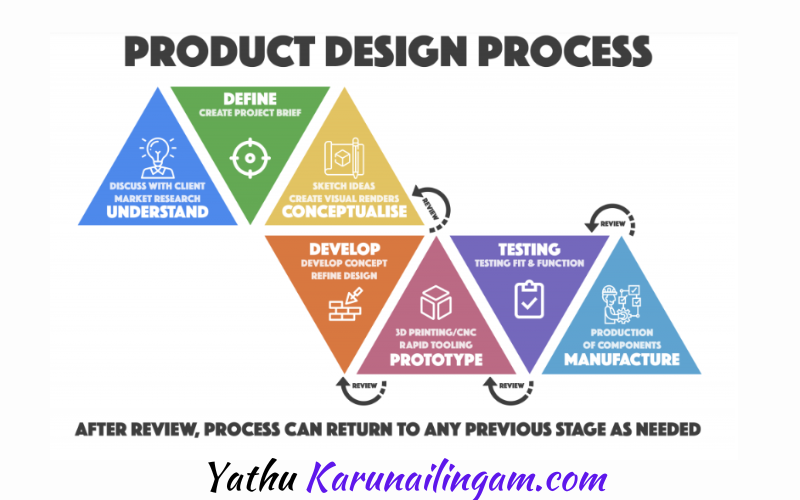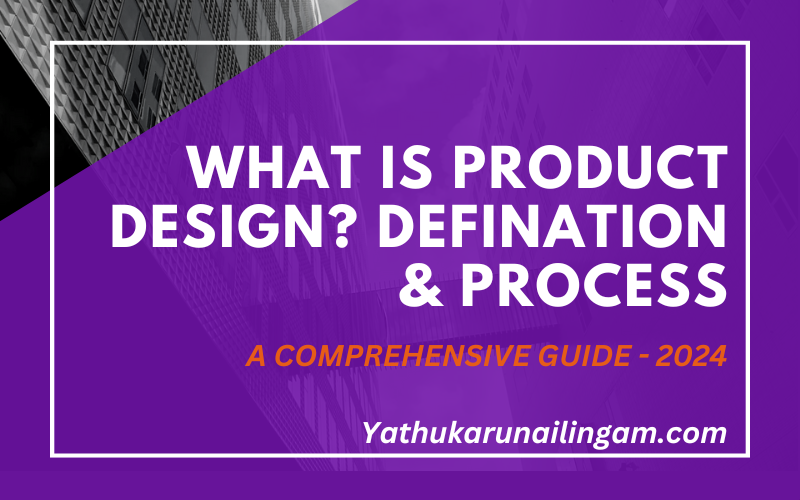- September 23, 2024
- by uyuwh
- Blog
- 0 Comments
Designing products is about more than creating beautiful items. The blend of functionality, creativity and user interaction is what brings ideas to life. Imagine the last product you used that was intuitive and seamless. Chances are, it was carefully crafted by an intricate design process.
Product design has a profound impact on our lives. What goes into creating these experiences? Understanding user needs and selecting the best tools and methodologies are all crucial steps in creating successful products.
We invite you to explore the world of design. Learn about its definition and multifaceted processes. Discover the essential tools that designers use today on YathuKarunailingam.com. And see how user-centered design can produce remarkable results.
Table of Contents
What is Product Design?
Product design is an interdisciplinary discipline that combines creativity and functionality. It focuses at its core on creating products that satisfy user needs and are visually appealing.
It involves understanding how the product will be used and imagining what it looks like in reality. Not only is it important to create something new, but also to enhance existing solutions and fill gaps in the market.
A combination of analytical thinking and artistic flair is required for effective product design. Designers need to consider a variety of factors including ergonomics, sustainability, and materials.
Problem-solving is at the heart of product design. It is aimed at creating innovative solutions to improve daily life, while still remaining commercially viable. This synergy between form and function creates products that are highly regarded by consumers.
Product Design: The Process
Product design is an exciting journey that turns ideas into real solutions. The process begins with market research and user needs. This phase is the basis for developing products that are popular with customers.
The next step is brainstorming. This is where the creative process takes place. Designers collaborate to develop concepts. This phase is iterative and encourages experimentation.
Prototyping is the next step after ideas have been solidified. Models allow designers to visualize aesthetics and functionality. These prototypes can be tested to identify any weaknesses in the design early on.
The feedback you receive is crucial to this process. The feedback of users can be used to improve the final product.
The focus shifts to implementation–bringing the design to life through manufacturing while ensuring quality standards are met throughout the entire cycle. In order to create products that are successful and meet real-world needs, each stage is crucial.

Tools Used in Product Design
Various tools are essential in the world of product design. They help to transform concepts into real products. Designers can create user interfaces that are stunning with software like Adobe XD and Sketch.
InVision and Figma are prototyping tools that help teams visualize ideas more quickly. These tools facilitate collaboration and make feedback loops more efficient.
SolidWorks, Rhino and other 3D modeling programs are essential for the development of physical products. These programs help refine designs before manufacturing begins.
Additionally, tools such as Trello or Asana help keep the team organized during the entire design process. Slack, for example, streamlines teamwork through effective communication.
Analytical tools are also important. Data analysis helps designers make better decisions by gaining a deeper understanding of user interactions. Each tool has a specific purpose and helps to shape the evolution of products from their initial sketches through to their final versions, ready for launch.
What Does A Product Manager Do? Learn With Yathu Karunailingam
Importance of User-Centered Design
The heart of any successful product design is user-centered design. The entire design process is centered around the needs and experiences of users. This ensures products that are not only functional, but also fun to use.
Designers can tailor solutions to real-world problems by understanding the behavior of users. Customers are more satisfied and loyal.
Using user feedback at different stages allows for continual improvement. Designers can identify problems early, leading to intuitive features and interfaces.
This methodology also fosters innovation. When users feel they are being heard, their insights can lead to creative breakthroughs that improve product functionality or aesthetics.
Prioritizing user-centered designs transforms a simple concept into a powerful experience that sets products apart on competitive markets.
Case Studies: Successful Examples of Product Design
Apple’s iPhone revolutionized smartphone technology. Apple’s iPhone revolutionized the smartphone industry with its sleek design, intuitive user interface, and seamless hardware and software integration. The design of this product not only drew millions, but it also changed the way we communicate.
Airbnb is another notable example. The platform’s easy-to-use interface improves the customer experience and makes it easier to find property listings. The focus on usability led to a global marketplace that is thriving.
Also, consider Nike’s Flyknit Technology. They created lightweight shoes with minimal waste by prioritizing sustainability, performance and durability. This innovative approach appeals eco-conscious customers.
Tesla is known for its stylish and functional electric vehicles. Their cars are not only environmentally friendly, but also attractive because of their clean lines and cutting-edge technologies.
These examples show how effective product design has a lasting impact on various industries.
What is the Role of Product Managers? Learn With Yathu Karunailingam
Conclusion
What is product design? Product design is an exciting field that combines creativity with functionality. It considers market needs and user requirements.
Understanding the complexities of product design will lead to innovative solutions. The constant adaptation of designers is fueled by the technology and feedback from users.
Research and testing are often the key to developing successful products. The right tools can enhance teamwork and efficiency.
Users-centered approaches improve not only satisfaction, but also business success. Businesses that place a high priority on this factor see a lasting impact in their products.
The landscape of product design changes as industries change. In a competitive market, staying on top of trends is essential.
It is a journey filled with growth and exploration opportunities.
FAQs
What is product design exactly?
The process of product design includes creating and developing products that meet the needs of users while also being functional and pleasing to the eye. From the initial concept to the final stages of manufacturing, product design encompasses all aspects.
What are the stages in product design?
Research, ideation and prototyping are all part of the product design process. Each stage is crucial in transforming ideas into products.
Why is it important to design for the user?
The user experience is a priority throughout the entire development process. This approach results in products that better match consumer preferences and needs, ultimately increasing satisfaction and usability.
What are the tools I can use to design a product?
For product designers, there are many tools to choose from, including CAD software such as AutoCAD or SolidWorks, Adobe Creative Suite, for graphic elements and collaborative platforms, like Figma or Sketch, for interface design.
What are some examples of successful products?
Absolutely! Iconic examples are Apple’s iPhone, which revolutionized mobile tech with its sleek interface. IKEA flat-pack furniture models that emphasize practicality. And Tesla’s electric cars known for their innovative features combining high performance and sustainability.
How long does it usually take to create a new product or service?
The timeline can vary greatly depending on the complexity, but it can be anywhere from several months to many years. This is influenced by factors such as the depth of market research, the number of prototypes required and any regulatory approvals before launch.





